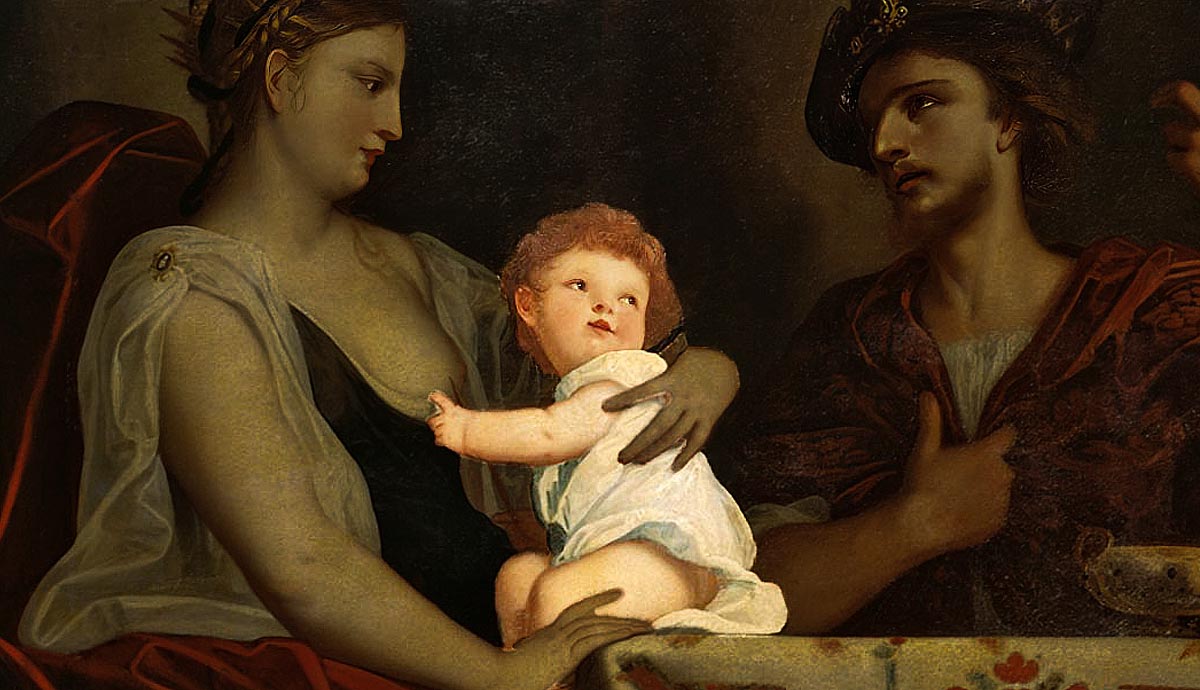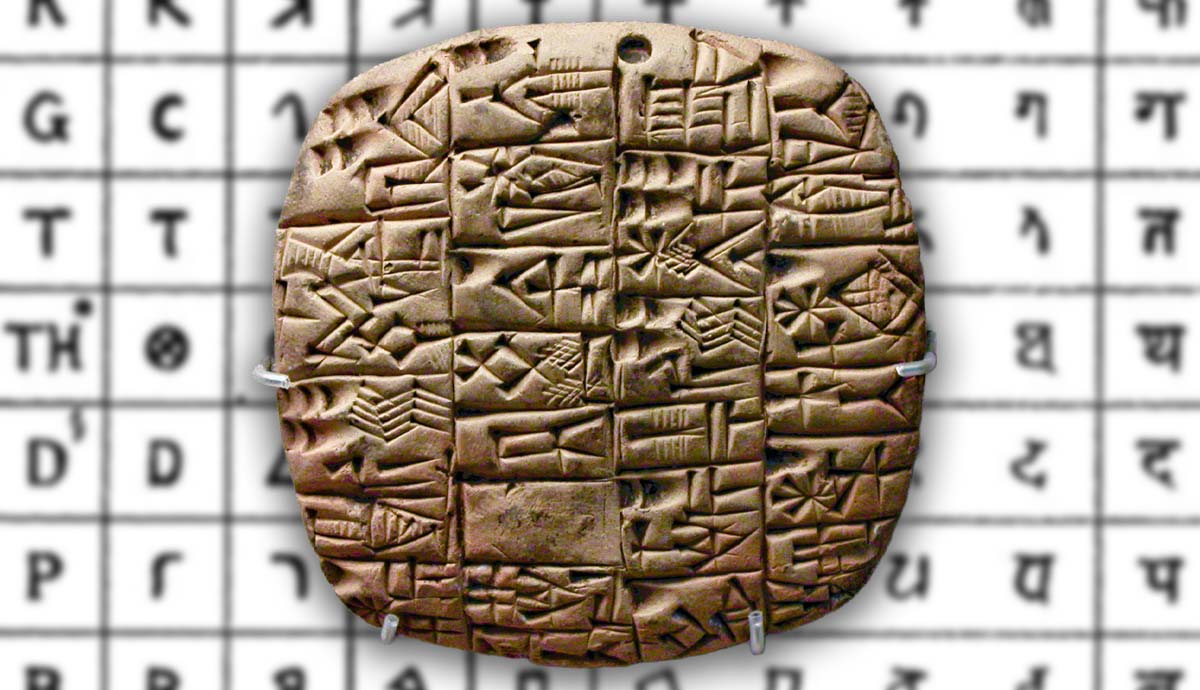
Alexander IV was born an heir to his father’s empire. He was to rule jointly with his uncle, Phillip III Arrhidaeus, under a regent until he could reach maturity. In reality, the empire was controlled by Alexander’s generals, known as the diadochi (“successors”), who split into factions and struggled for power. In 321 BCE, they divided the empire between themselves. The child was brought to Macedonia with his mother, where he remained a pawn in the succession crisis. Alexander IV fell victim to this power struggle before he reached adulthood.
Alexander the Great Dies in Babylon: The Crisis Begins

The dramatic story of Alexander IV starts before his birth, with the death of his father in June 323 BCE. Alexander the Great died in Babylon at a precarious political moment. His vast empire was not completely stabilized. The newly conquered territories had to be organized and controlled, a task not easily achievable by one person. To make matters worse, Alexander died without an heir, at least an obvious one. According to Diodorus, Alexander expressed his wishes for the successor on his deathbed, saying that he wanted to leave the empire “to the strongest” (“tôi kratistôi). There is an ambiguity about these alleged last words; another interpretation is that Alexander said “tôi kratero”, “to Craterus”, one of his generals who was not present in Babylon. Before dying, Alexander gave his signet ring to Perdiccas, the commander of the cavalry.
At this point, the first in line of succession was Alexander’s half-brother Arrhidaeus, favored by Meleager, the commander of the phalanx. However, Perdiccas proposed a different candidate. Alexander’s wife, Roxana, was pregnant at the time. Perdiccas suggested delaying the final decision until the child was born. If the child were male, he would be the heir to the empire. Even in these early days of the succession crisis, factions formed, leading to tense negotiations. It was finally agreed to accept both suggestions: Arrhidaeus and the child, if a boy, were to rule jointly.
Lineage

Alexander IV was the last member of the Argead family, a dynasty that ruled Macedonia since the eighth century BCE. The son of Alexander III “the Great” and grandson of Philip II, he came from a long line of rulers; the Argead family had achieved its biggest success in the years before his birth, under his father and grandfather. The boy’s paternal grandmother, Olympias, the wife of Philip II, was the daughter of Neoptolemus I of Epirus, whose family claimed descent from Achilles.
The boy’s mother, Roxana (Roshanak), was the daughter of Oxyartes, a Bactrian or Sogdian nobleman who served under the satrap of Bactria, Bessus, during Alexander’s conquest in Asia. After successfully conquering the Achaemenid Empire, Alexander married Oxyartes’ daughter Roxana in 327 BCE. Anecdotes say that he married Roxana out of love, and against the wishes of some of his companions, who did not want a foreign wife for their ruler. Later, in 324 BCE, Alexander also married Persian princesses Stateira and Parysatis, a move mainly motivated by political reasons.

It is possible that Alexander IV had an older half-brother named Heracles, the product of Alexander’s relationship with a mistress named Barsine. At the time of Alexander’s death in 323 BCE, the boy was around three or four years old. It is unclear why he was not seriously considered as a possible heir, but Heracles, too, if he were indeed Alexander’s son, was a child and incapable of ruling immediately.
The precise date of birth of Alexander IV is unknown, but it had to be in late 323 or early 322 BCE. Curtius asserts that Roxana was six months pregnant at the time of Alexander’s death, while Justin says that she was eight months pregnant. Upon his birth, the boy was presented to the Macedonian soldiers and became king Alexander IV, jointly with his uncle Arrhidaeus, now Phillip III.
It became immediately clear that the survival of the empire would depend on Alexander’s generals and other notable companions more than his immediate blood relatives. Indeed, these men became known as the diadochi, “the successors”. These were men with high ambitions, who wanted a share of the empire, although the early days after Alexander’s death saw an apparent unity. Nominally, the empire remained undivided.
Since one king was an infant and another one was deemed unfit to rule due to intellectual disability, they both needed prostates (regents). Initially, Craterus became the regent of the kings, but he could not truly command any power, since he was not present in Babylon at the time. In practice, Perdiccas was the one with the most power and control, a fact that did not escape other diadochi. After the birth of Alexander IV, Perdiccas effectively became the prostates of the kings.
Of course, the child king had no actual power; he was a pawn in the succession crisis fought by the diadochi. Still, he and his uncle Philip III, himself also without true power, were recognized as the official rulers throughout the empire. For example, the years of their rule were used in official documents, although there is an inconsistency over dates in different parts of the empire.
Under Perdiccas

Perdiccas worked quickly to consolidate his power. His ambition was to assert control over the entire Alexander’s empire, under the pretext of serving the kings. The other diadochi focused more on their specific satrapies, where they wished to establish their own control, and, eventually, rise as rulers.
A symbolic and strategic event that could help Perdiccas consolidate his power was the funeral of Alexander the Great. Traditionally, it was the duty of the new king to organize the funeral of his predecessor. Alexander wished to be buried in Siwa, Egypt, instead of the Macedonian royal funeral place at Aigai. However, Perdiccas had decided to bring Alexander’s body back to Macedonia, no doubt to assert himself as a successor symbolically, even though officially he was only the regent for the true kings.
According to Diodorus, Alexander’s funeral carriage took two years to complete; it was richly ornamented and drawn by sixty-four mules. It moved from Babylon sometime in 322 or 321 BCE, but it never reached Macedonia. Ptolemy, the satrap of Egypt, captured the carriage and diverted it to Egypt, where he interred Alexander. Symbolically, Ptolemy achieved what Perdiccas had hoped to do.
These events provoked Perdiccas to launch an attack on Egypt. This mission proved disastrous. During the failed invasion, his soldiers switched sides. He was killed by his own men in 321 and Ptolemy emerged victorious.
After this, the leading diadochi met at Triparadisus to divide the empire between themselves, although everyone still named Phillip III and Alexander IV the official rulers of the empire. During the Partition of Triparadisus in 321 BCE, it was also decided that Antipatar would become the new regent of the kings.
Young Ruler in Macedonia

Soon after, Antipater moved back to Macedonia, bringing with him Alexander IV and his mother, as well as Philip III. Antipater’s regency was short: he died of natural causes in 319 BCE. Antipater’s death caused its own succession crisis, since he passed over his son, Cassander, in favor of his general Polyperchon. Needless to say, Cassander was not thrilled about this. He soon allied himself with Ptolemy and Antigonus against the new regent and the young king. Cassander also enjoyed the allyship of Eurydice, the wife of Phillip III. On the other hand, the new regent, Polyperchon, allied himself with Alexander IV’s grandmother Olympias, who protected the interests of her grandson.
Now the opposing sides formed around two kings — kings who were both pawns with no real power. In 318 BCE, Polyperchon’s forces were defeated, and he had to retreat to Epirus. He took Alexander IV and Roxana with him. Olympias played a crucial role during this time: she helped Polyprchon take over Macedonia from Cassander. To secure allies in Epirus, Olympias betrothed young Alexander IV to princess Deidamia, the daughter of Aeacides, king of Epirus. It was particularly impressive how Eurydice’s army defected to Olympias: the soldiers refused to fight the mother and son of Alexander the Great. After these victories, Olympias captured Philip III and Eurydice. They were executed in 317 BCE, which made young Alexander IV the sole ruler, with Olympias as his regent.
Cassander’s Conspiracy

However, this wasn’t the end of Cassander. He managed to retake Macedonia in the following year. Cassander captured Olympias at Pydna with the intention of executing her, even though one of the terms of surrender was that her life would be spared. Since soldiers refused to harm the mother of Alexander the Great, Olympias was handed to the families of her victims, who killed her.
After retaking Macedonia, Cassander took Alexander IV and Roxane to Amphipolis as prisoners. They were kept in the Amphipolis citadel with a man named Glaucias as their jailer. Cassander ordered that the boy be treated like an ordinary person, with no royal honors. The boy, still nominally the ruler, waited in captivity while the diadochi fought each other for pieces of his father’s empire.
The Third War of the Diadochi ended in 311 with a treaty agreement between Ptolemy, Cassander, Antigonous, and Lysimachus. The same treaty included a note that Cassander was to hold his territories only until Alexander IV reached adulthood. This demonstrates that, at least nominally, the boy was still considered the king of Macedonia. While the treaty does not specifically mention other territories, Alexander IV was likely considered the ruler of the whole empire.
At the time of the treaty, the boy was 11 or 12 years old and was approaching the age at which he could be expected to take his royal duties. Macedonians loyal to the Argead dynasty wanted to see Alexander IV rule in his own name and without a regent. This posed an obvious obstacle to Cassander and his ambition. At this point, Cassander had only one way to keep his power: eliminate the boy and any other trace of Argead family, so that there are no relatives of Alexander the Great left who could inherit the kingdom.
Diodorus asserts that the boy and his mother were murdered by their jailer Glaucias on Cassander’s orders. The exact timeline of the event is unknown, but it is probable that it occurred sometime in 310 or 309, although it only became known later. Different parts of the empire continued to count the regnal years of Alexander IV up until 305 or 304. Alexander IV’s alleged half-brother Heracles was also killed with his own mother around the same time, either shortly before or after Alexander IV.
The Resting Place of Alexander IV, Son of Alexander the Great

Tomb III, or “Prince’s Tomb” in Vergina (place of ancient Aigai), discovered in the 1970s by the archaeologist Manolis Andronikos, is believed to be the resting place of Alexander IV. The analysis of the remains confirmed that they belonged to a boy, aged 13 to 15, which would fit Alexander’s age at the time of his death. The same complex also includes the tomb of his grandfather, Phillip II.
Tomb III is smaller than the king’s tomb of Phillip II, but it is richly decorated with depictions of chariots, and includes numerous funeral offerings, signifying an important personality. Furthermore, if it is indeed the tomb of Alexander IV, it demonstrates that the boy received a royal funeral according to customs. It is possible that Cassander eventually buried the boy with all necessary care and according to the protocol: the new ruler putting to rest his predecessor.










